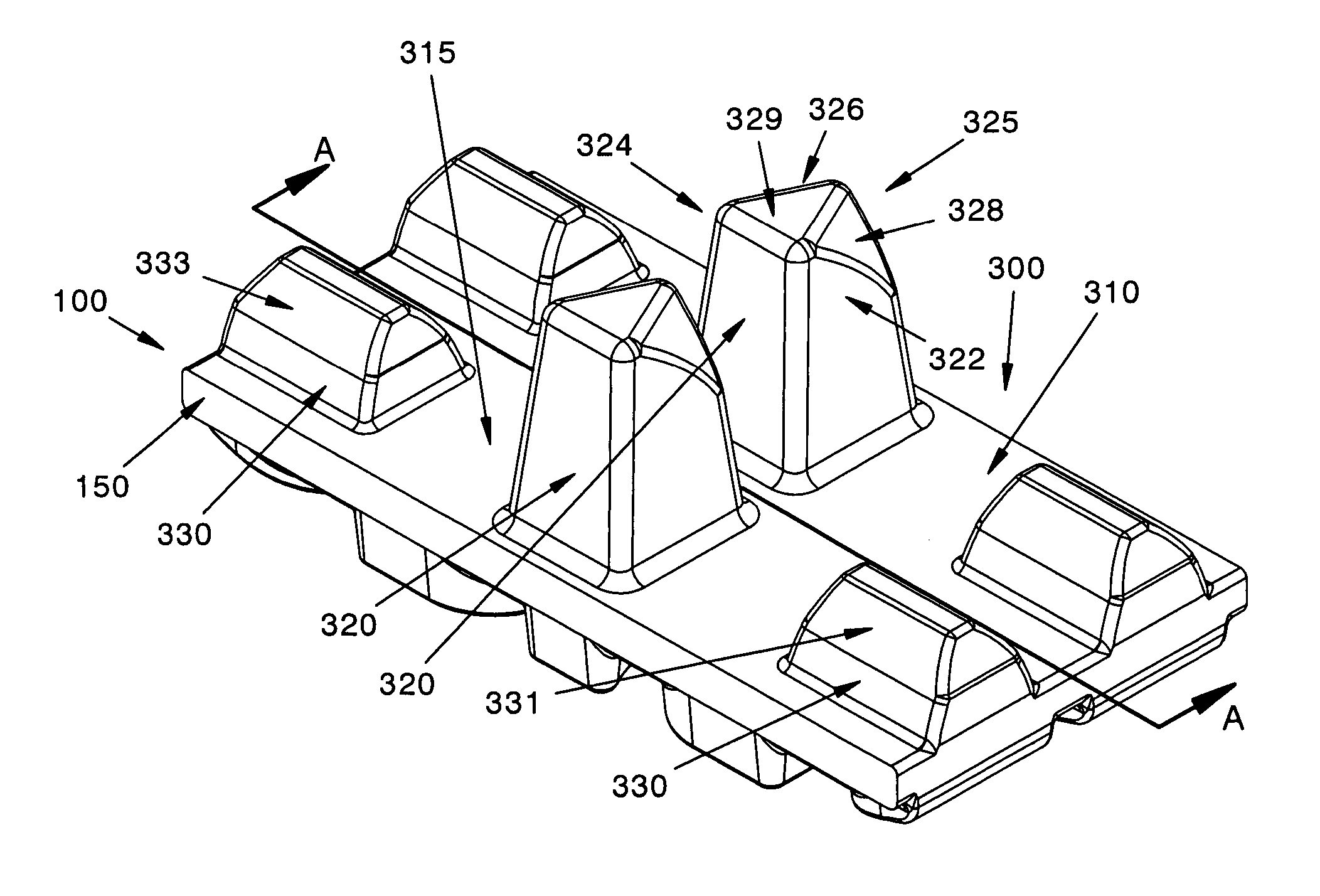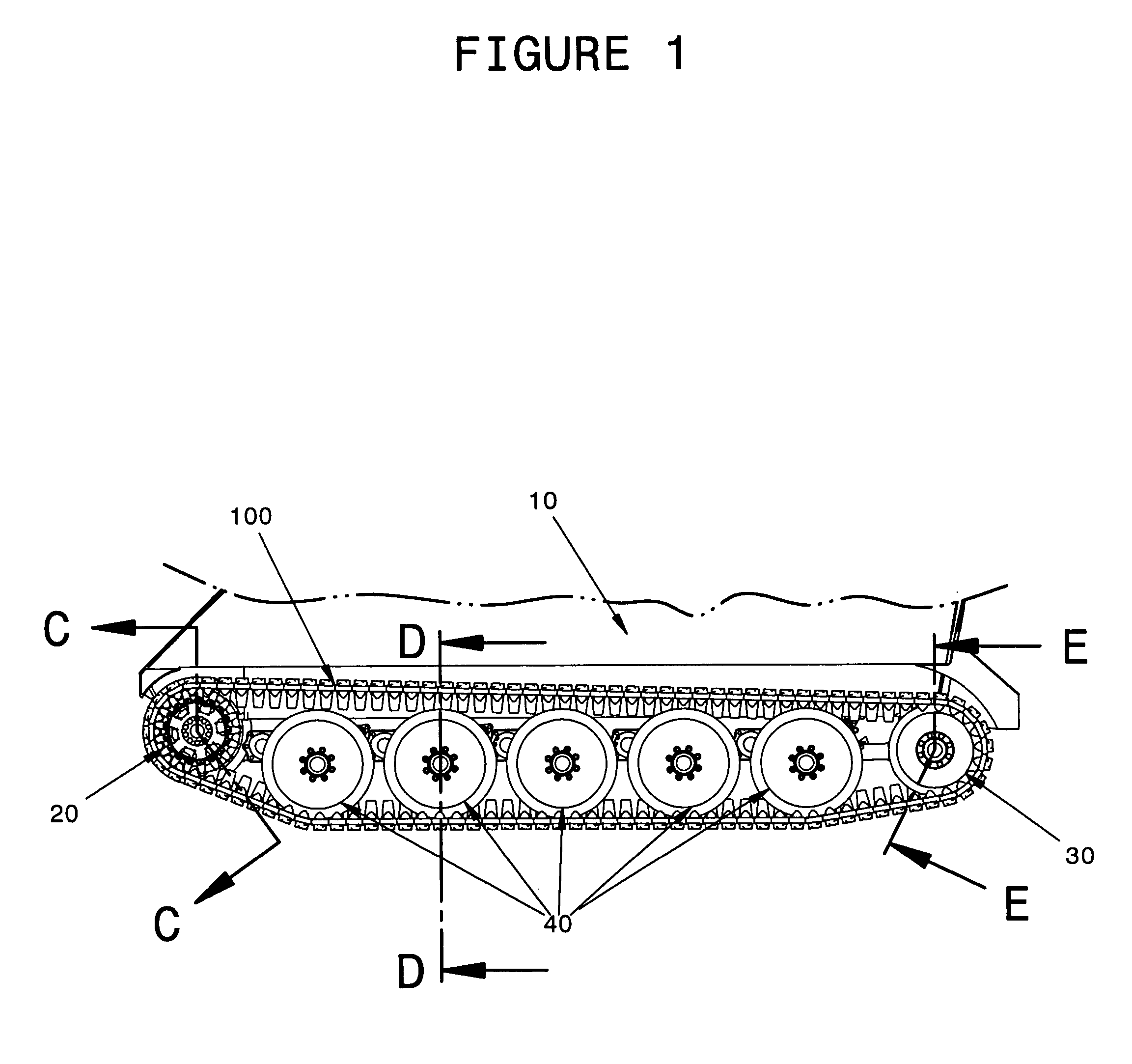Problems encountered in actually reducing such an endless rubber track to practice include how to maintain adequate tension on such belt, how to drive such tracks and keeping the belt in lateral alignment with the wheels when the wheels are subject to large lateral loads.
Other problems are maintaining the
structural integrity and providing long life for the belt, mid rollers, drive wheels, and idler wheels.
While smaller rubber tracked vehicles are commercially available, these do not carry adequate loads for military vehicles (including tanks), normal multi passenger or produce transports, and their drive wheels can easily become mired in heavy mud or
snow.
As a result, the rubber tracks unavoidably get off the
sprocket wheels or track rollers of the vehicle.
Various attempts have been made in order to prevent the dislodgement of the rubber tracks from the vehicle, but they have not met with success.
While the latter frictional resistive forces are a valuable attribute under wet or snowy conditions, they add undesirably to energy costs when driving the vehicle over flat, hard surfaces.
Solutions to the problems of actually implementing a heavy-duty vehicular rubber track drive
system have proven elusive and scientific scaling techniques have not, to date, been successfully applied to
light duty vehicles for purposes of developing a
heavy duty rubber track
system.
Thus, despite the long felt need for and the advantages thereof, a
heavy duty application vehicle utilizing such rubber track system is commercially unavailable today.
However, these metallic tracks still present significant inconveniences in relation to wheeled vehicle.
The metallic track produces an excessively high level of
noise.
This fact can cause a significant strategic
disadvantage when used in association with military vehicles since the enemy can detect the presence of the military vehicle many miles away.
With respect to civilian vehicles equipped with such tracks or military vehicles used in peace keeping missions, the metallic tracks can cause significant damage to the ground surface whether it be paved or not.
Metallic tracks are very heavy.
Such a weight is both an inconvenience with respect to the mobility of the vehicles and with respect to their consumption of fuel.
Even metallic tracks provided with rubber pads
wear out extremely rapidly such that the pads need to be replaced every 500 to 1000 miles on a military tank.
Metallic tracks also require a lot of maintenance.
Finally, the cost of manufacturing, maintenance and refurbishing are extremely high.
De-tracking is a phenomenon by which a track loses contact with the guiding system such that it will completely remove itself from the vehicle and thus cause it to stop.
If these drive lugs are allowed to skip over the teeth of the sprocket, damages to and premature wear of the track will occur.
The abrupt movements which result also cause significant discomfort to the passengers of the vehicle.
Tracks can also prematurely break down due to a number of other internal and external elements such as: breakage of reinforcing rods, tearing of the reinforcing fabric, cables and fibres and the abrasion, piercing, tearing and de-lamination of the rubber components.
The prior art solutions which are adapted for regular industrial and agricultural vehicles are inadequate when faced with the severity of the problems faced by military vehicles.
Indeed, the
high weight of military vehicles combined to the high speeds and strong accelerations (both lateral and longitudinal) create high stresses in the track which considerably amplify the aforesaid problems.
 Login to View More
Login to View More  Login to View More
Login to View More 


